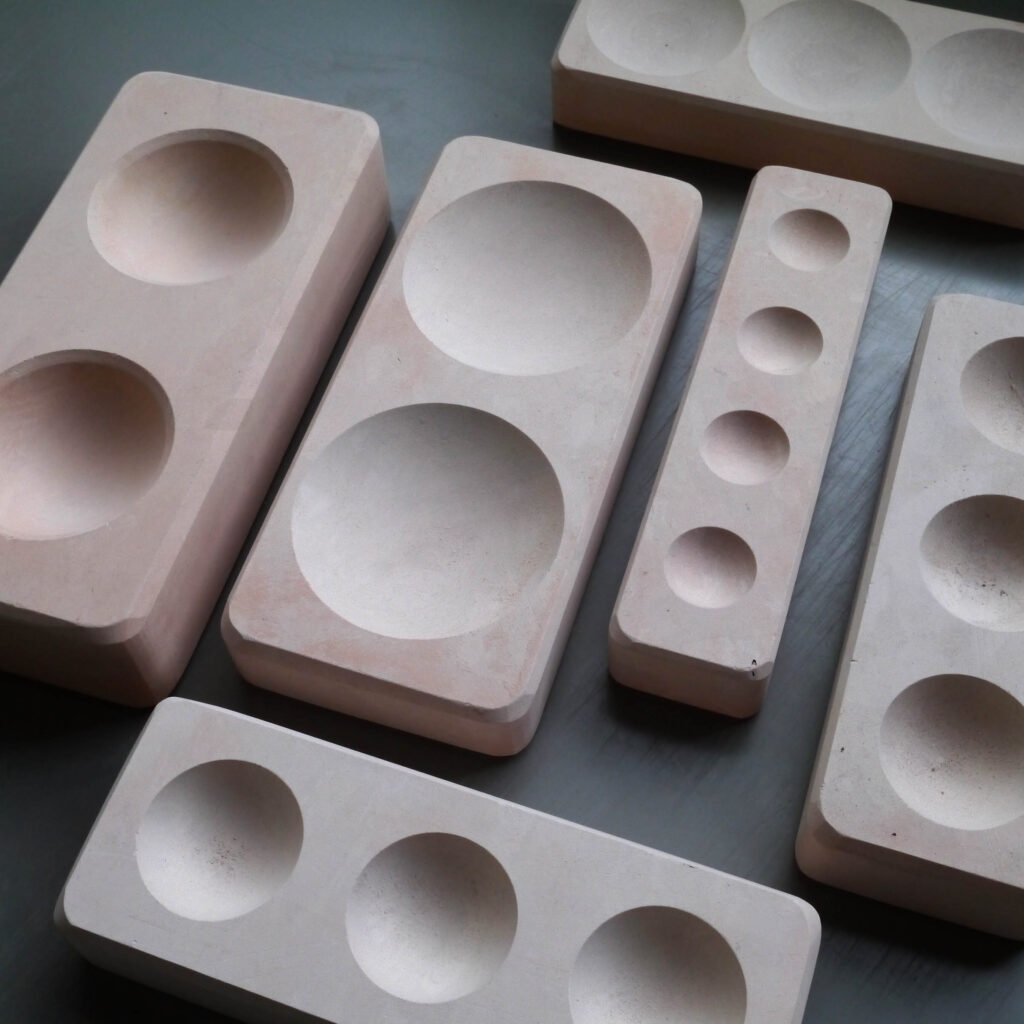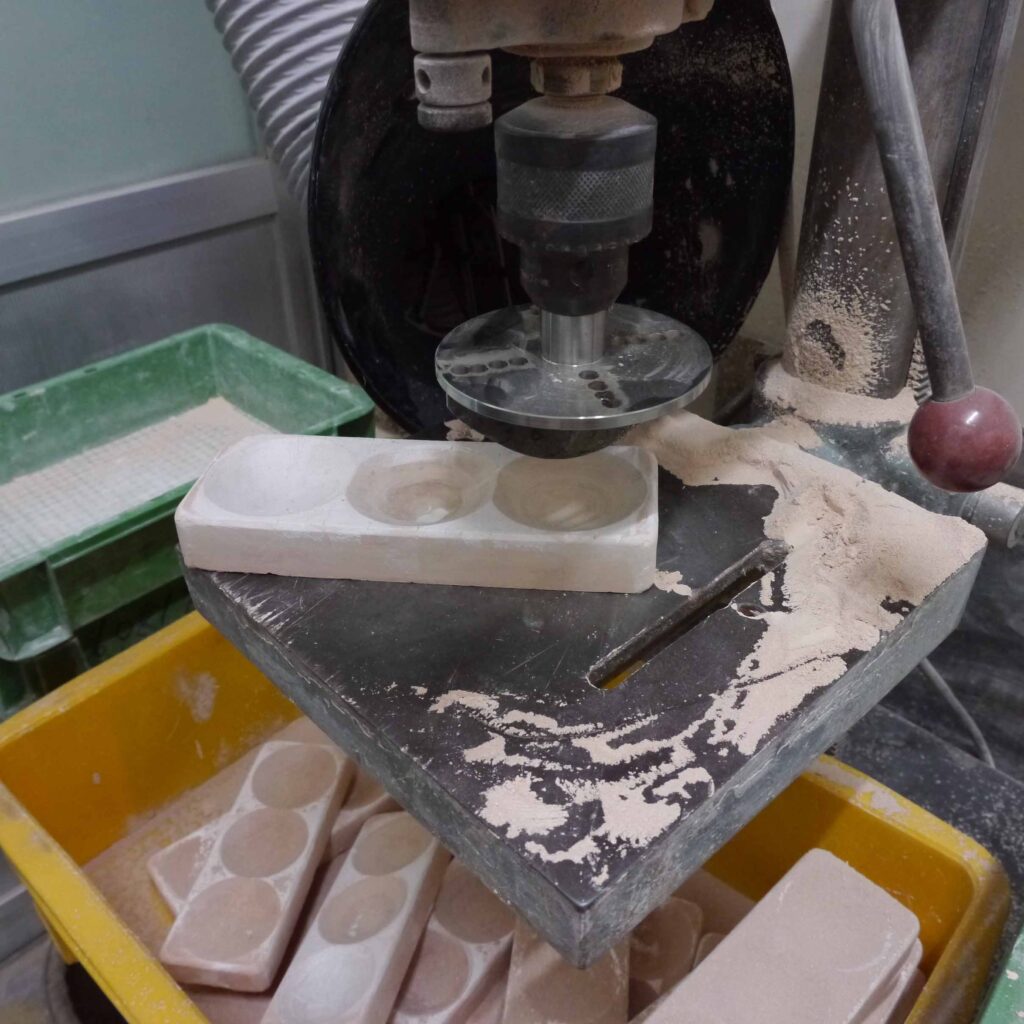Diatomite heating trays

The above photograph shows heating trays used for moving the square pieces of cut optical glass while they are being heated in the electric furnace before the lens blank pressing process. Various types of heating trays are made available to match the size and curvature of the lenses we process. If you grab a heating tray in your hands, you will see how surprisingly light it is. Known as “diatomous earth” or “diatomite,” this material is the fossilized remains of diatoms, a type of algae that is mainly collected from strata formed after the Cretaceous Period. Heating trays used at Obuse factory are made in Ishikawa and known for their high quality. Since old times, diatomous earth has also been used for charcoal stoves, which attracted attention after the Great East Japan Earthquake as portable ovens that use biomass such as charcoal.

Diatomous earth is not only light in weight but also features low heat conduction. In an electric furnace, it absorbs little heat, so it does not obstruct stable temperature management. Optical glass material gradually softens and melts along the hollows of the heating tray as it is heated to around 700ºC in the electric furnace. Heating trays are designed to produce round pieces of optical glass that are slightly smaller than the press molds waiting outside the electric furnace.
During the heating process, the four corners of square optical glass rub against the heating trays. And, repeated use of the heating trays makes the shape of their hollows uneven. So, we need to regularly correct the shape of the heating trays to the necessary curvature.

Various correcting tools are designed to maintain the required diameter and depth of each specific hollow. These are all produced at the Obuse factory. The heating trays themselves are made by firing diatomous earth and must be sufficiently aged before being used to press cut optical glass. If even the slightest amount of volatile impurity mixes into the heating trays, it can adversely affect the optical glass. So, heating trays are fired at a high temperature of 600ºC to 800ºC for two weeks to make them thoroughly stable. This firing time is much shorter than the time required for diatoms to fossilize, but still considerably longer than the standard practice of modern industry. This is one of the choices we make to produce high-end optical products.